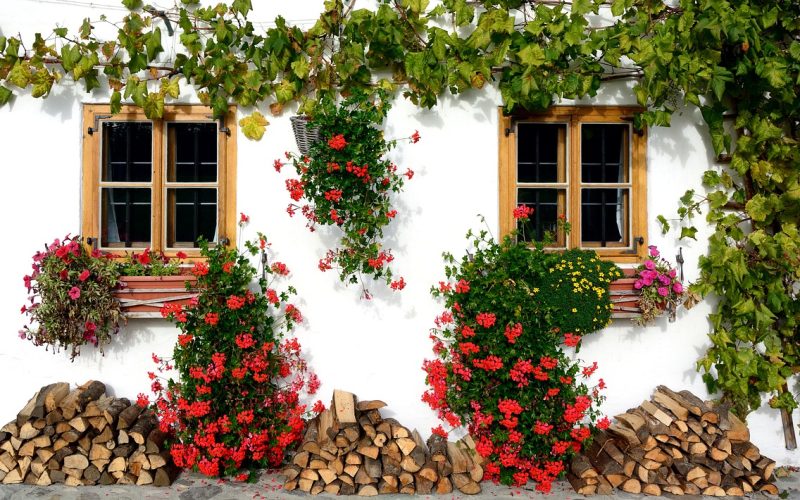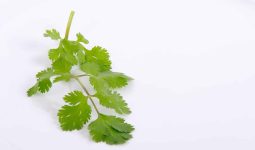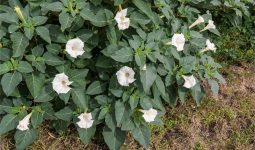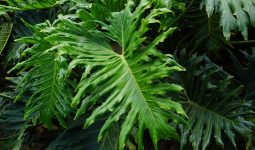Gardens in homes are wonderful. Few other ornaments can compare to how well they look in a house and how well they contribute to keeping the air pure and clear of contaminants.
However, no matter what plants you cultivate in your garden, having different types of climbing plants is always a wise choice.
Climbing plants stand out among the other plants in gardens, with many plants in varying splatters of color, all to thrill onlookers and fuel owner pride.
Here are some of the different types of climbing plants that may be cultivated in your garden to get you started on your gardening journey:
1. Scentsation Honeysuckle
You may grow this honeysuckle plant as a shrub or train it to climb almost anything. It’s among the best different types of climbing plants.
White and yellow flowers with a strong scent bloom in the spring and persist until late summer.
Red berries then replace the fallen flowers in the fall. This vine isn’t invasive and won’t eat other plants, unlike other honeysuckle variants, yet it still attracts hummingbirds like all honeysuckle species.
This kind of honeysuckle delivers a comparable pleasant scent without interfering with surrounding growth, unlike other varieties that may suffocate other plants.
2. Allamanda / Golden Trumpet
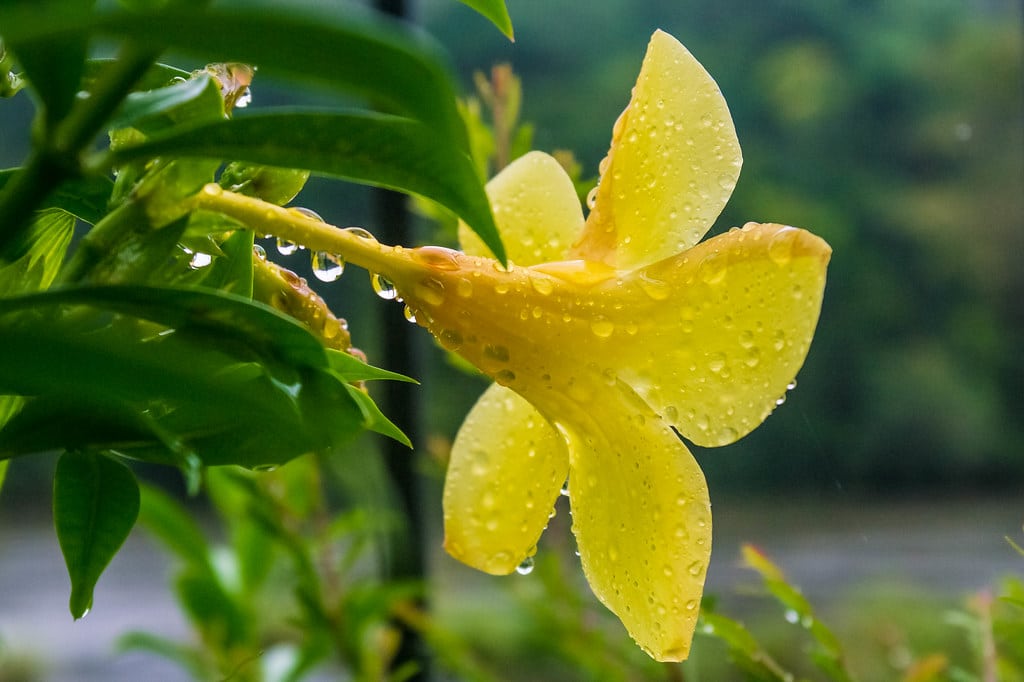
The Allamanda is a native of America and is also found in various regions of India.
It is also known as The Golden Trumpet because of its golden-yellow tint.
Allamanda requires a lot of sunshine and thrives best in consistently warm areas.
It might be wise to cultivate these plants indoors in India. However, since it must replicate American conditions, cultivating Allamanda may be challenging.
When Allamanda is cultivated in circumstances like those of its native location, it blooms at its best.
The Allamanda, however, may outgrow any other plant in the indoor garden and provide excellent attractive flowers if the right circumstances are present.
3. Cypress Vine
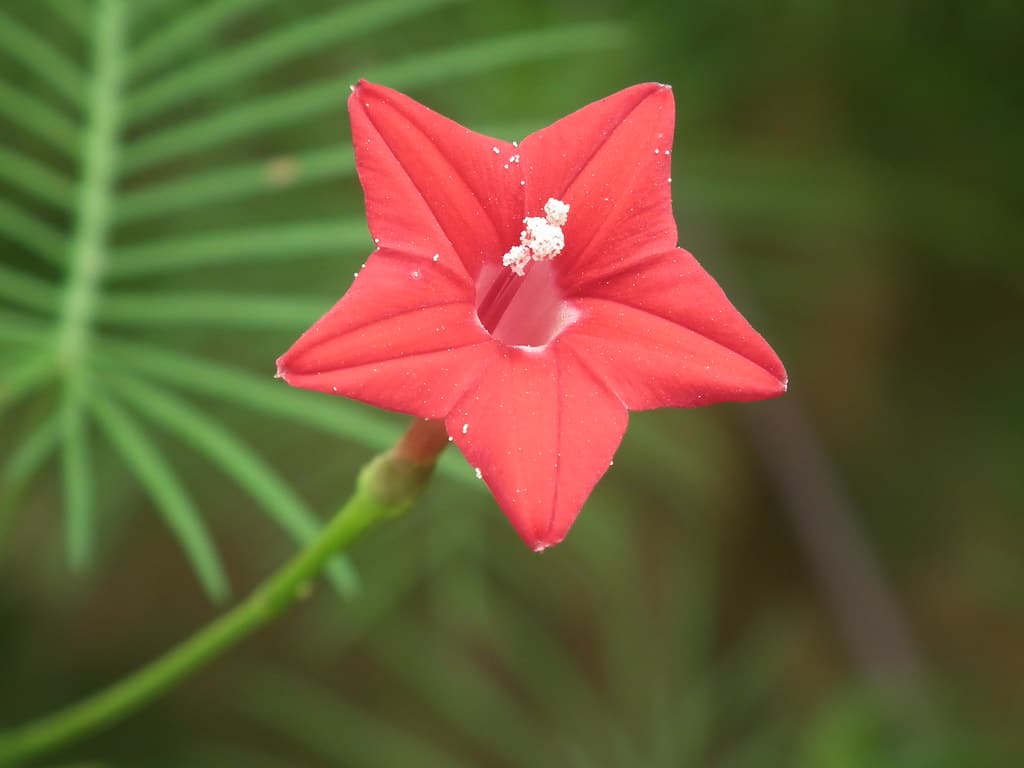
The morning glory is connected to the cypress vine. It also goes by the names Red Cypress Vine and Hummingbird Vine.
This is a fantastic option if you want to attract hummingbirds and butterflies to your yard or garden.
This annual vine has white, pink, or red star-shaped flowers throughout the summer, which bloom approximately a month after the soil warms and the vine begins to grow.
The plant often returns yearly if it produces enough seeds and the area doesn’t freeze or just experiences mild cold.
In contrast to the waxy, dark green foliage of many blooming vines, this plant has thin, fern-like leaves that give it a light, airy sensation.
It is native to the Southeast of the United States and is listed as an invasive weed in certain states.
Since the leaves, flowers, and stems are poisonous if swallowed, keep dogs and kids away.
This is among the best different types of climbing plants on this list.
4. Star Jasmine
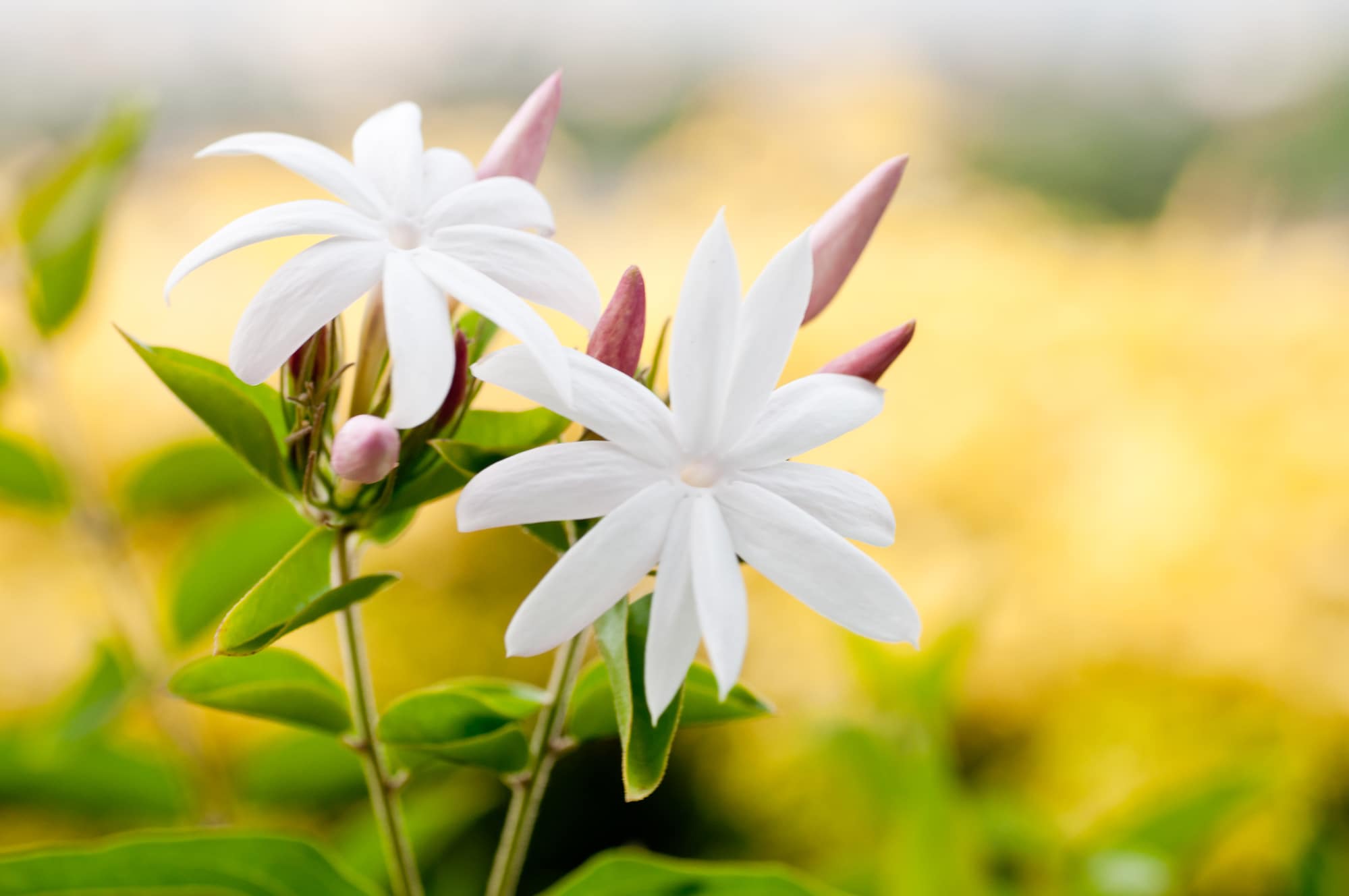
Anyone seeking a sweet-smelling garden with a few extremely attractive spots of white color would love the jasmine.
The optimal conditions for jasmine flower growth include full light, well-drained soil, and ample organic fertilizers.
These plants might be a treasure in even the most basic gardens with a little tender loving care and appropriate hydration.
Jasmines look beautiful when used as decorations. Due to their pleasant scent, they are often used in perfumery and other fragrant items.
5. Madagascar Jasmine
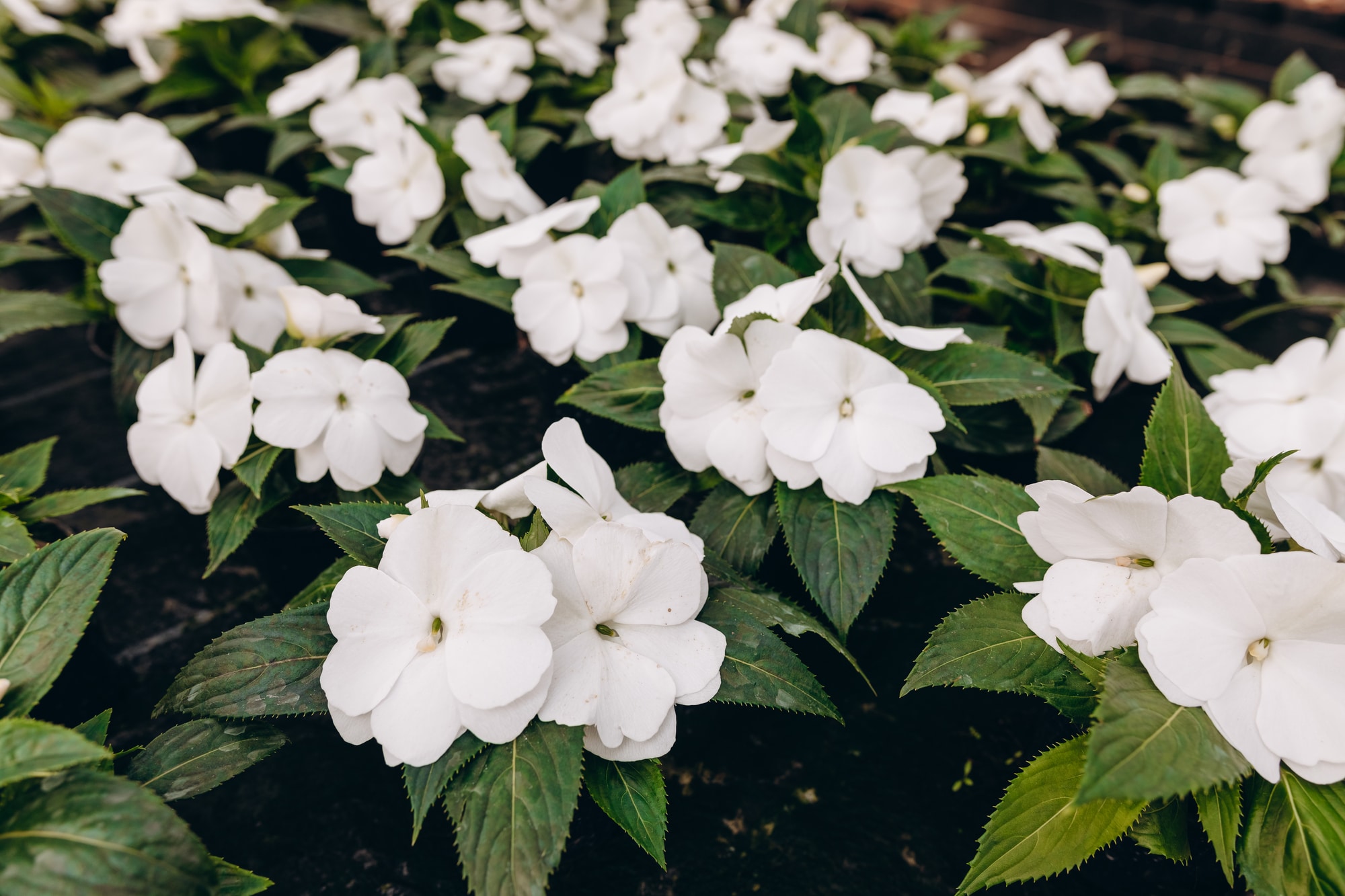
This is among the different types of climbing plants that grow to a height of around 15 feet.
Clusters of small, star-shaped tubular flowers in white are framed by leathery, dark green foliage. In all zones, it thrives in containers.
Place this plant inside or in a greenhouse to overwinter it away from frost in cold locations when the temperature falls below 40 degrees Fahrenheit.
This vine’s fragrant tiny white flowers, also known as the bridal wreath and Hawaiian wedding flower, are widely used in bridal bouquets.
Cooler temperatures cause the plant to develop more slowly and produce fewer flowers.
6. Blue Moon Kentucky Wisteria
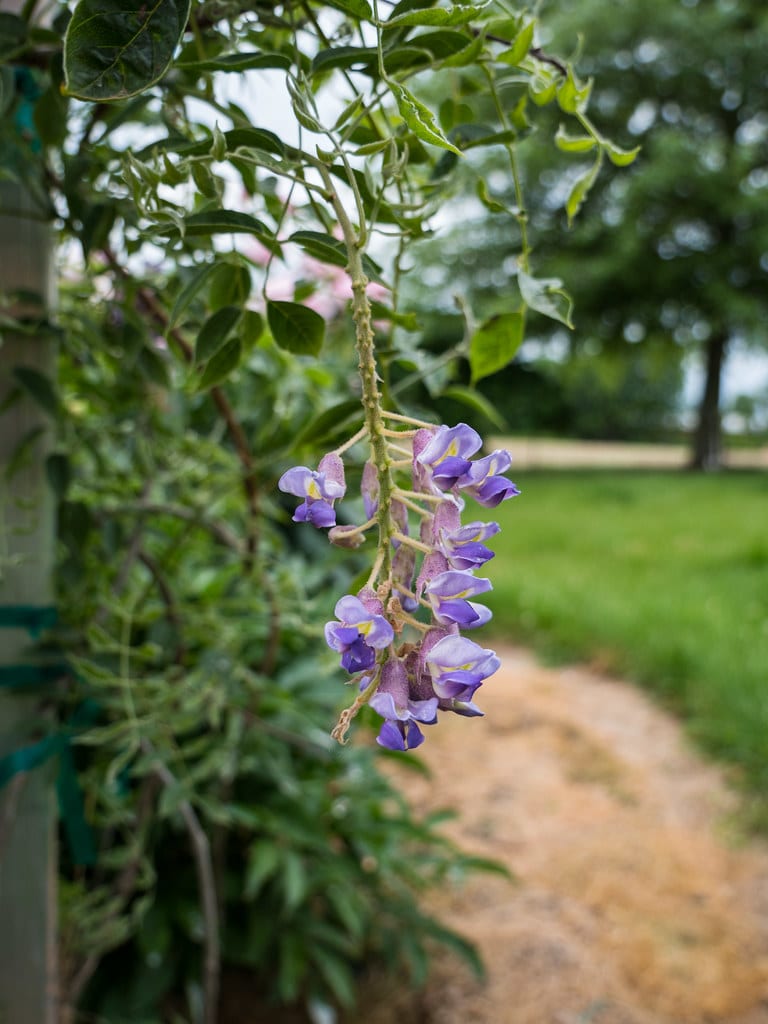
This plant is one of the simple-to-grow different types of climbing plants that produce impressive results.
Late spring brings out clusters of vining lavender flowers ranging from light to dark and blooms a few more times during the summer.
Everyone in the area will notice the flowers’ lovely and deep scent. Kentucky Wisteria also attracts butterflies, which makes it an even more lovely addition to a garden or yard.
Although newly planted plants may not blossom until their third spring, over the first year or two, the vines can reach a height of 25 feet and a width of up to 8 feet.
7. Aparajita / Butterfly Pea
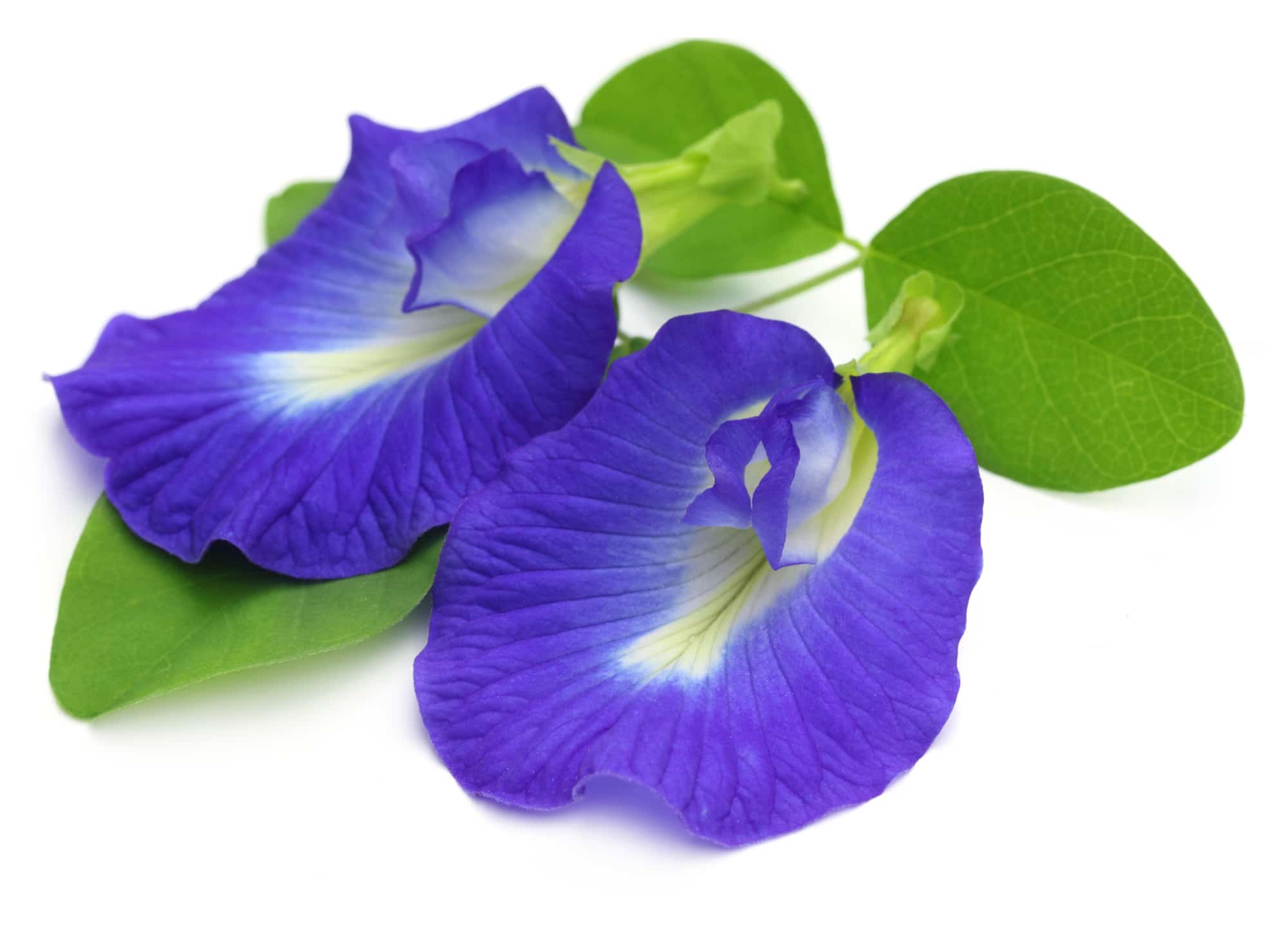
Various names know this blue-jeweled plant, native to Asia and South America.
In various parts of the world, they are also known as Asian pigeonwings, bluebell vine, blue pea, and Darwin pea.
However, it is called the Butterfly pea or Aparajita in India. The butterfly pea is a distinctive flower that may be produced as a climber plant.
The flower may be used for several things in addition to its strikingly blue and white petals, providing a sense of serenity to the garden.
For instance, many shepherds use it to feed their sheep, while farmers use it to feed their cattle.
It can also be used to meet our culinary needs. For irritated eyes, it is also used as ayurvedic medication.
Additionally, it works best as a memory and brain enhancer.
8. Virginia Creeper
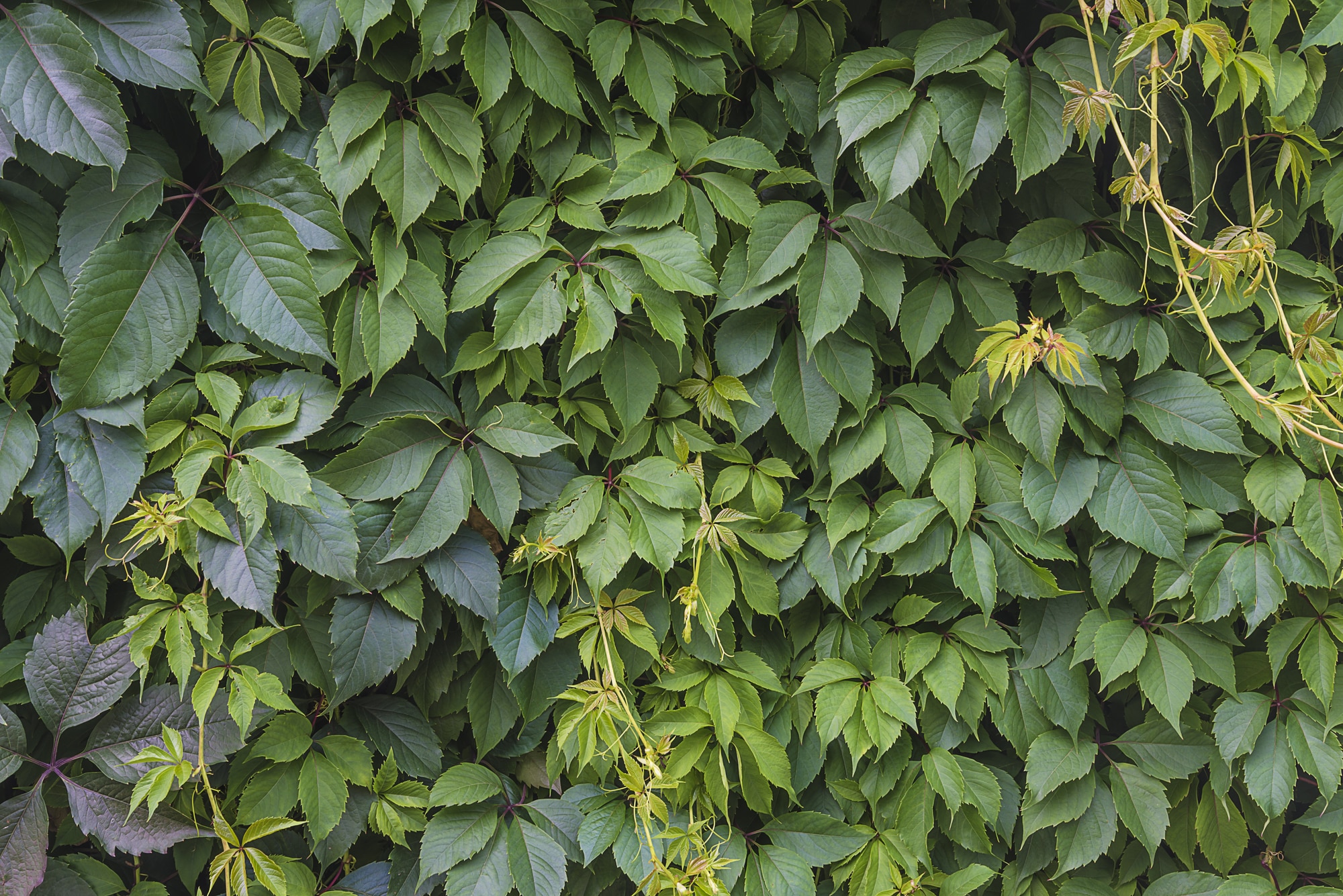
The flowers are green and difficult to see when they develop between June and July on a Virginia Creeper vine.
However, you won’t miss the flowers because the leaves are this plant’s real star.
Its five-pointed leaves are a vibrant green in the summer, but as the temperature cools in late autumn, they become a vivid red.
This plant can climb flat objects like walls thanks to its aerial roots, but it also looks good wrapped around a building or used as a quickly spreading ground cover.
Even for those new to gardening, it is simple to cultivate. Although animals consume berries, people are fatally poisoned by them.
This is undoubtedly one of the best different types of climbing plants.
9. Cup and Saucer Vine
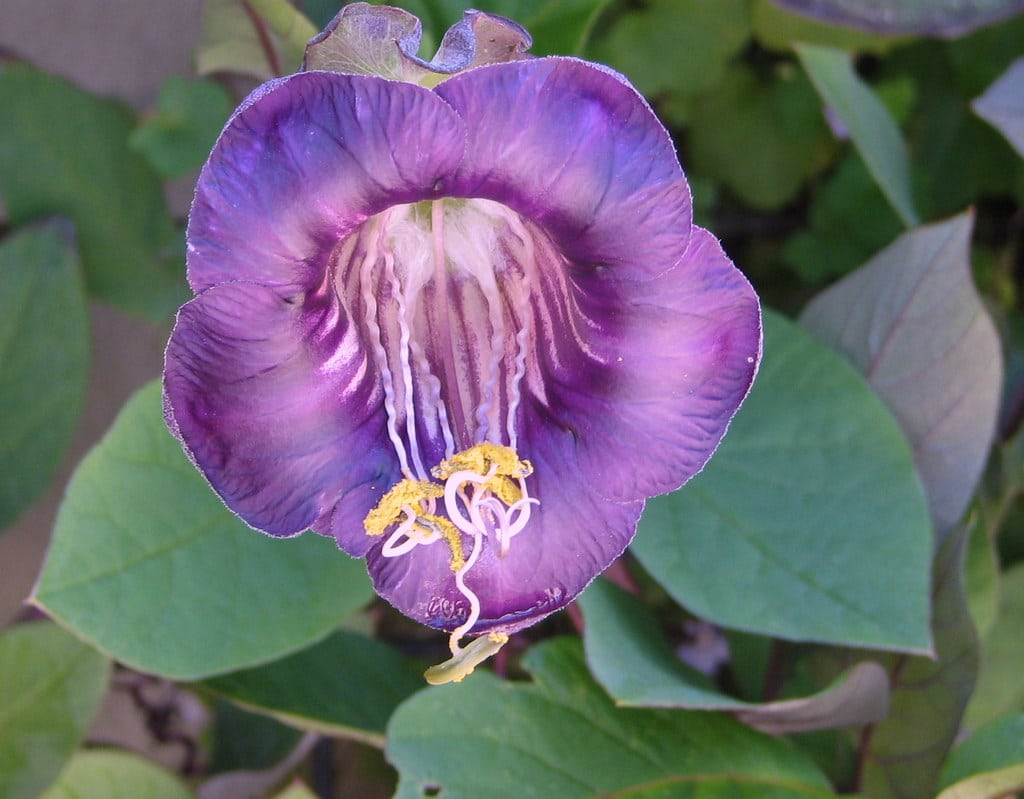
When grown from seed, this fast-growing plant may reach almost its whole height in a single growing season.
In its first year, it may not blossom properly or at all. Letting the plant grow will cover fences and trellises in a dense layer of oblong, emerald-green leaves.
Before opening, the flowers are an unappealing shade of light green.
Once they do, they take on a cup-like form, become purple or white, and release a sweet, honey-like perfume.
This is one of the different types of climbing plants that thrives in pots as long as it has a place to climb.
Check before planting since certain states identify this plant’s invasive variant.
If inviting bats to your land bothers you, avoid it since it also draws bats for pollination in areas below USDA Zone 7.
10. Zephirine Drouhin Climbing Rose
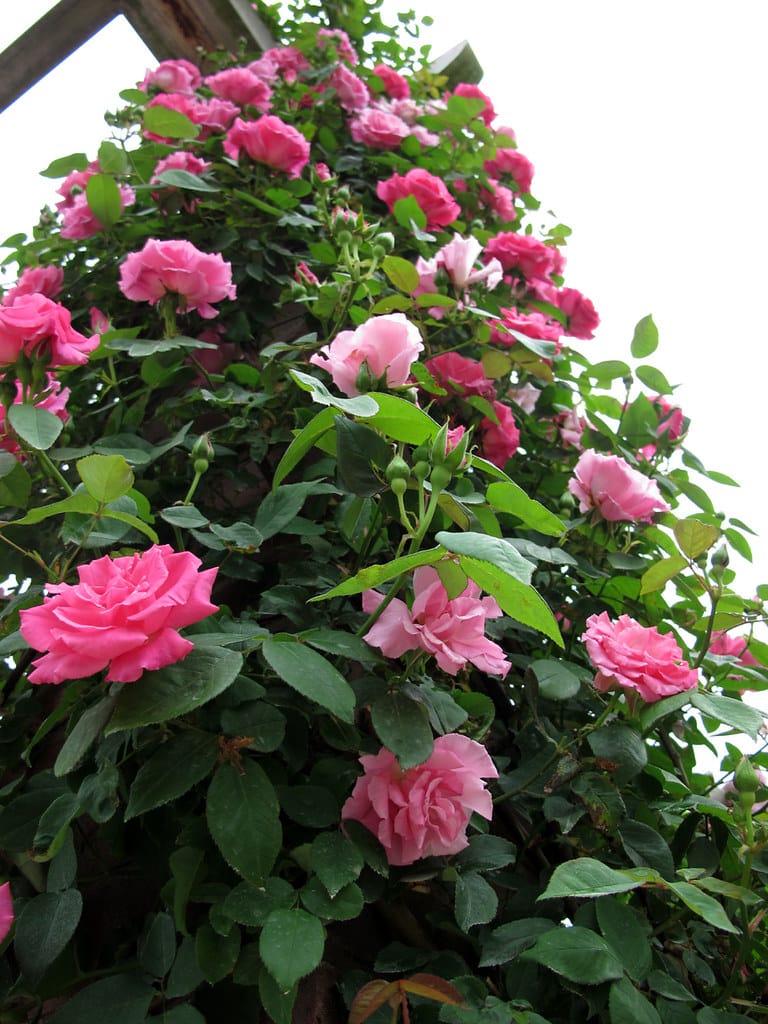
This rose has magnificent, deep pink flowers that give the impression that they need a lot of effort to produce.
As long as you watch for possible diseases and pests, the plant grows well and tolerates all soil types.
The optimal conditions for this thornless rose to produce its classic 4-inch flowers are warmer temperatures and full light.
From July through September, the plant continuously produces hundreds of flowers, and if you don’t want it to climb, it may be trained to grow as a shrub.
A Bourbon rose with a particularly sweet scent reminiscent of raspberries is the Zephirine Drouhin Rose.
11. Bengal Clock Plant
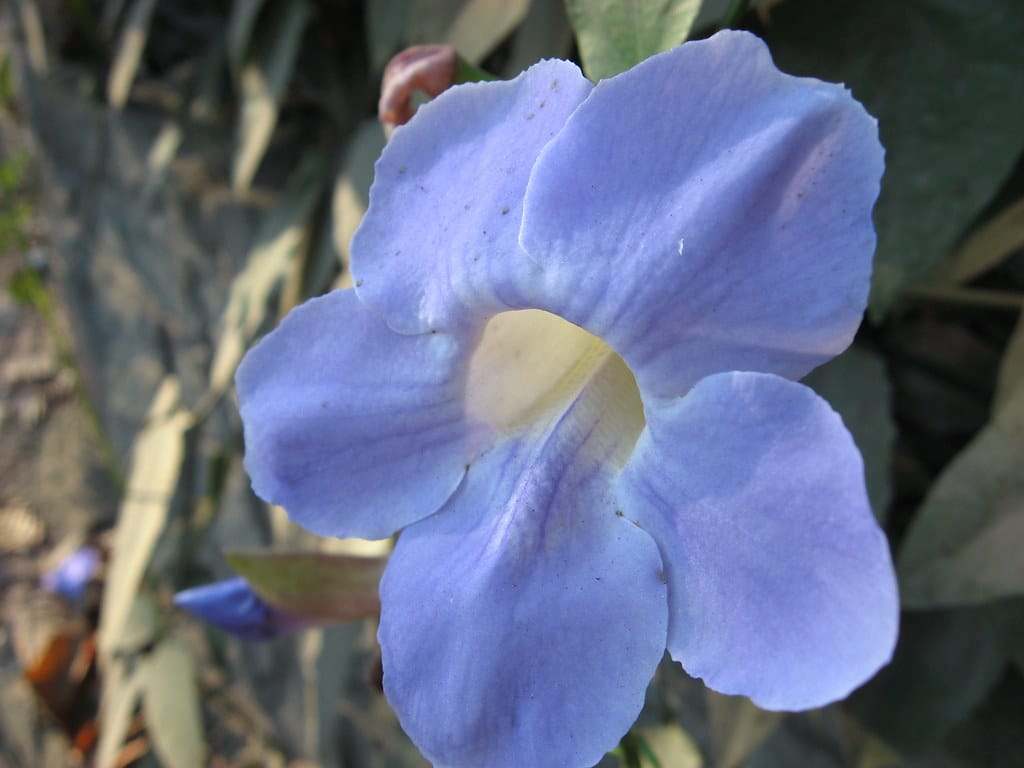
The Bengal Clock Plant, regarded as one of the most beautiful different types of climbing plants in the world by some of the most well-known botanists, lives up to its name.
It has very few distinctions from the morning glory and is extremely similar.
Its peculiar name, clock plant, refers to how it twines clockwise around support.
This plant, native to North India, may bloom at any time of year. However, it tends to bloom somewhat more in the summer than in the winter.
Due to its dazzling blue color and trumpet-like form, it is also known as the Blue Trumpet plant.
This tropical plant, known as “blue sky” by several botanists, may be grown as climbers or in pots.
12. Chocolate Vine
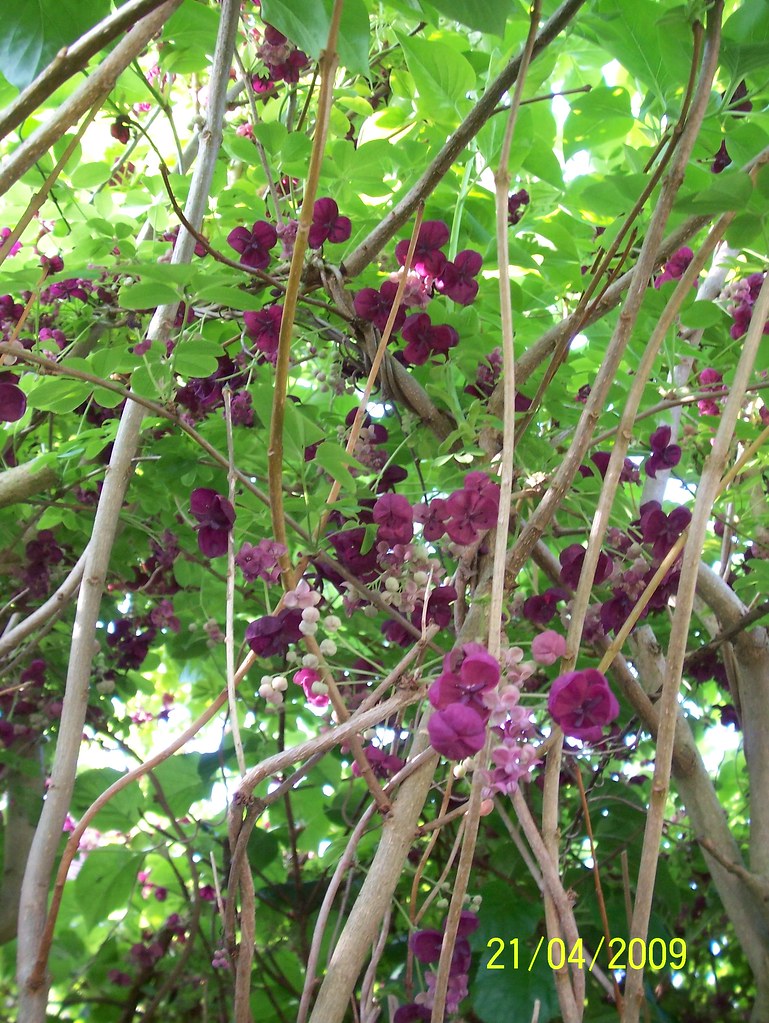
The chocolate-scented flowers of the Chocolate Vine, which vary from the sweet-smelling flowers on most other trellis climbing vines, give the plant its name.
Compared to several different types of climbing plants on this list, this one grows better in the shade.
Flowers are distinguished from other flowers by their three petals and rich brownish-purple color.
They emerge in March and flower until May, after which they yield small, edible but unpleasant-tasting fruits with an inside filled with many tiny black seeds that are shaped like eggplants.
On this plant, which has the potential to grow up to 20 feet per year, the oval-shaped leaves are a glossy dark green and are borne in five-leaf clusters.
Check before growing the Chocolate Vine anywhere in the eastern US since certain southeast and northeastern states classify it as invasive.
13. Flame Plant
In Bangalore, the flame plant has a well-established reputation.
Bangalore’s gardens often overflow with these vividly colored, fiery-petaled species as springtime approaches.
The flaming vine plants are usually grouped and grow as far as possible.
It’s not hard to grow a flame plant at home. Flame plants need sufficient space to create their chamber and enough direct sunshine.
Watering the plant two or three times a week should be sufficient to maintain the plant hydrated for extended durations. You might even choose to put them on your balcony.
14. Climbing Hydrangea
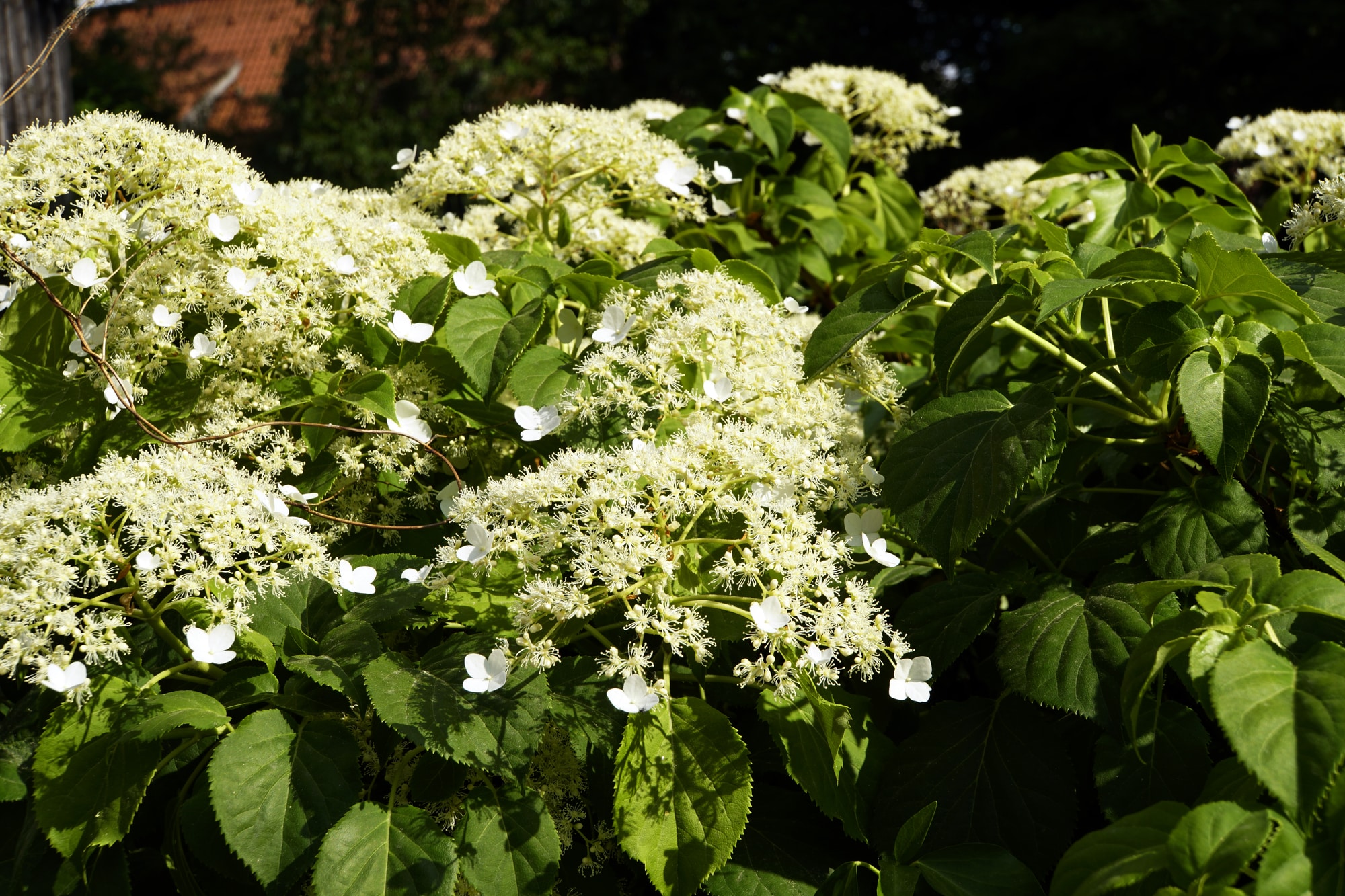
The climbing hydrangea requires little upkeep and is simple to cultivate. It may act as a ground cover and is a strong climber.
With tiny, aerial rootlets, it clings to trellises and buildings as it slowly develops. However, once the plant establishes itself, it grows quickly.
The early summer lace cap flowers, which are white and cream, look lovely against the glossy, dark green leaves.
Since it harms horses, cats, and dogs, plant it away from easy access to animals.
Despite being one of the most well-liked blooming vines, it may twist without a trellis or a fence.
Climbing Hydrangeas are one of the best different types of climbing plants that are simple to cultivate and may scale walls.
In one growing season, it may also expand to a second floor. It may also become a lovely shrub with a little trimming.
15. Bougainvillea

In India, the brightly colored thorny decorative plant known as “Bougainvillea” is also called “Kagaz Ke Phool” by locals.
Paper Flowers, which approximately translates as Kagaz Ke Phool, is a fitting name for the plants because of their delicate petals resembling soft paper.
The benefits of having a bougainvillea plant are its ability to grow inside or outside, regular sunshine exposure requirements, and ease of maintenance.
Other colors are available, and you can get them online from places like Amazon.
16. Carolina Jessamine
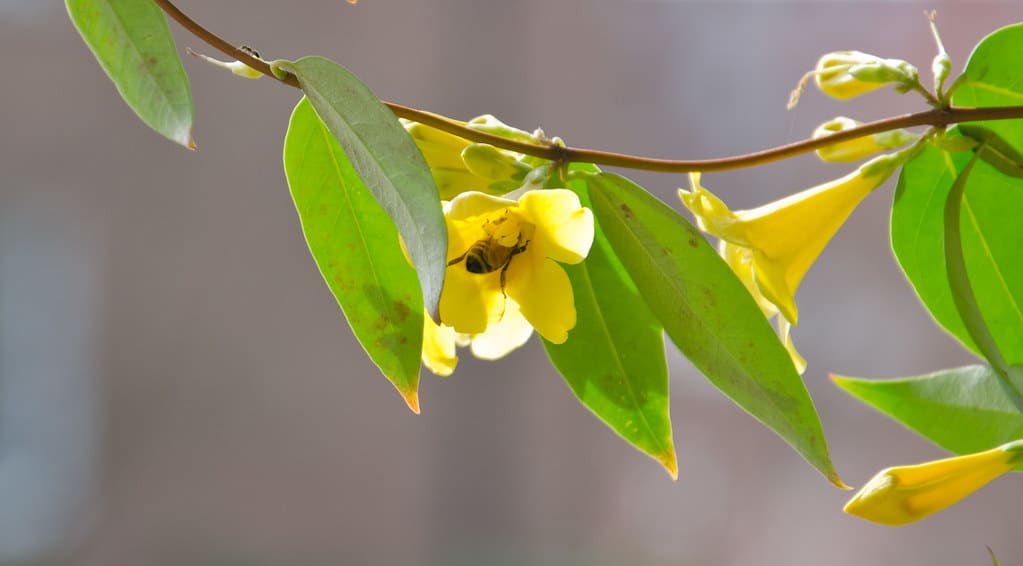
This particular plant is one of the different types of climbing plants that naturally grow in the southern United States.
One of the simplest vines to cultivate may be planted in the ground or in pots with enough water.
The Carolina Jessamine, sometimes called the “Evening Trumpet flower” and the “Poor Man’s Rope,” is South Carolina’s official flower.
Despite being a great climber, it also serves as a ground cover.
The blooming period for the deep yellow and golden trumpet-shaped flowers lasts from late February to late April.
Although certain tendrils may get top-heavy and need periodic cutting, the plant requires little upkeep.
Carolina Jessamine is very harmful to humans, animals, and insects if consumed. Avoid planting this vine if you have dogs or an open yard where they may go lost.
Also, avoid growing near apiaries since it may cause bee deaths and poison honey.
17. Apple Blossom Clematis
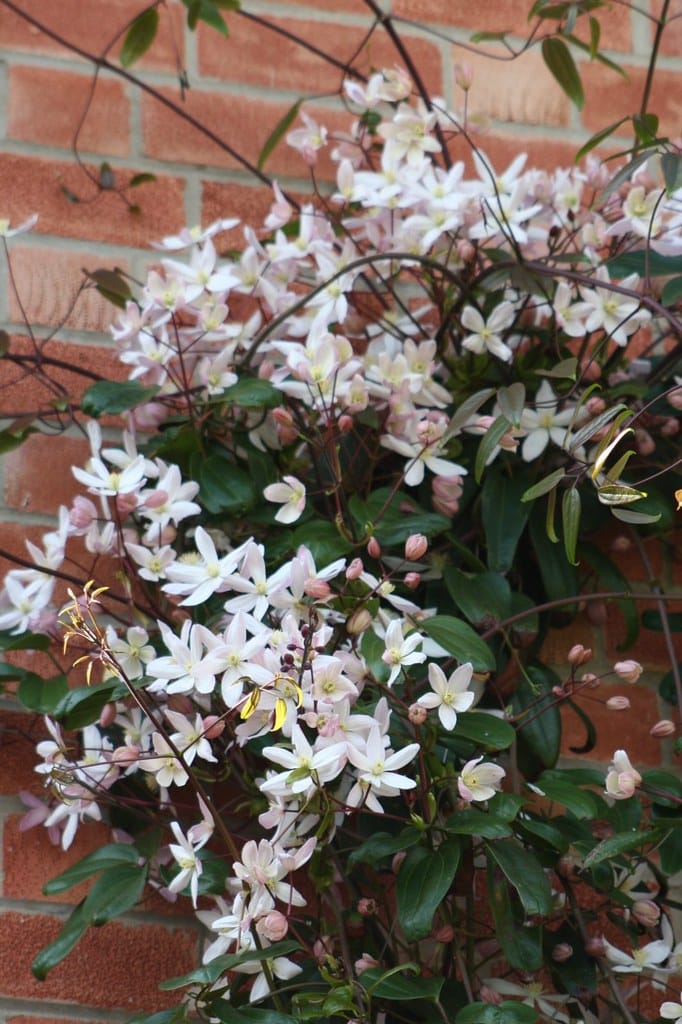
This evergreen clematis species features waxy, dark green foliage and delicate, somewhat almond-scented pale pink and white flowers.
The flowers are among the first blooms in a garden to emerge in the early spring.
The foliage is elegant and thick enough to provide a lovely trellis or fence cover that lasts the whole year, even though flowering lasts up to four weeks.
Additionally, the plant doesn’t need trimming, making it a low-maintenance option that is simple to cultivate.
If you have dogs or have an open yard where they may walk in, this plant is one of the few different types of climbing plants you should avoid.
Instead, put it in a yard with a fence to keep dogs out since it is very deadly to them.
18. Golden Bell Clematis
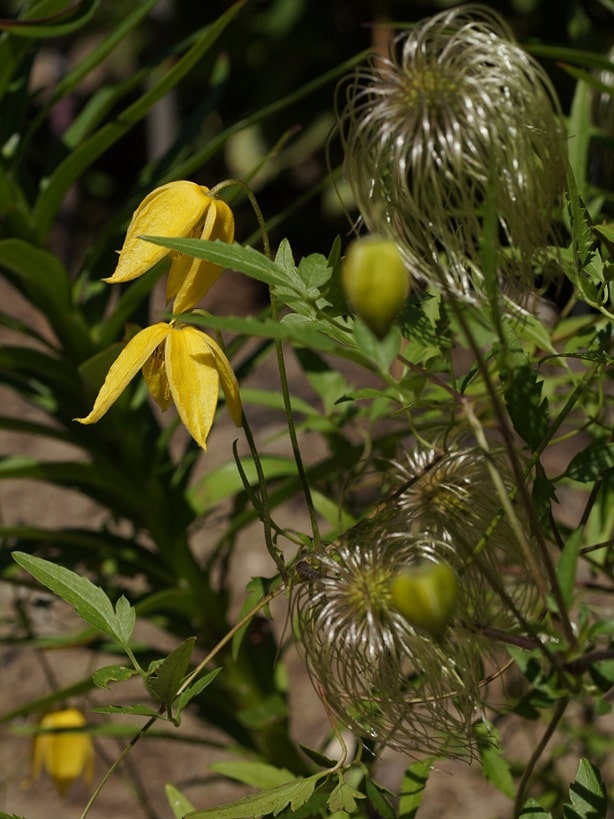
This clematis variety blooms with bell-shaped, hanging flowers in the early summer, often in early June, and produces new buds until the end of October.
The small, less than two-inch, golden-yellow flowers are tiny.
One of its names comes from the flowers, which mature into fluffy hanging pods resembling beards.
Many late-summer and autumn flower bouquets include the pods.
Although this clematis attracts butterflies, it is very dangerous to humans and animals, so keep it out of their reach.
The sap from the plant may cause skin rashes in kids who contact it, and if they put their fingers in their mouths, they might get severely poisoned.
19. Black-Eyed Susan Vine
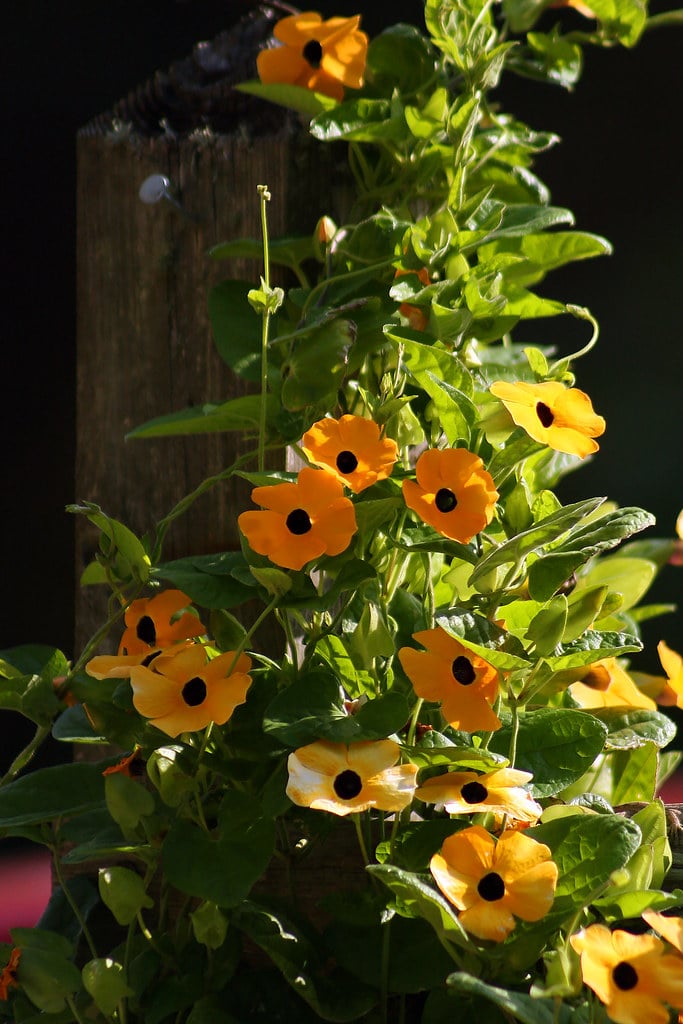
When most people think of the Black-Eyed Susan, they don’t often picture vining plants but rather the shorter wildflower form.
An unusual kind of vine, it may reach a height of 8 feet and swiftly spread to a width of 6 feet.
After the final frost, plant the vine in the early spring and watch it climb. In one growing season, it may reach a height of 8 feet.
The vine self-seeds, so you don’t have to bother about replanting or upkeep, but if you’re not cautious, it might completely take over its specified region of the garden.
The petite, daisy-like, coral-colored flowers stand out against the arrowhead- or heart-shaped leaves.
Also known as a clock vine, it may be invasive in certain tropical regions like Hawaii, so research before planting.
20. Snowdrift Clematis
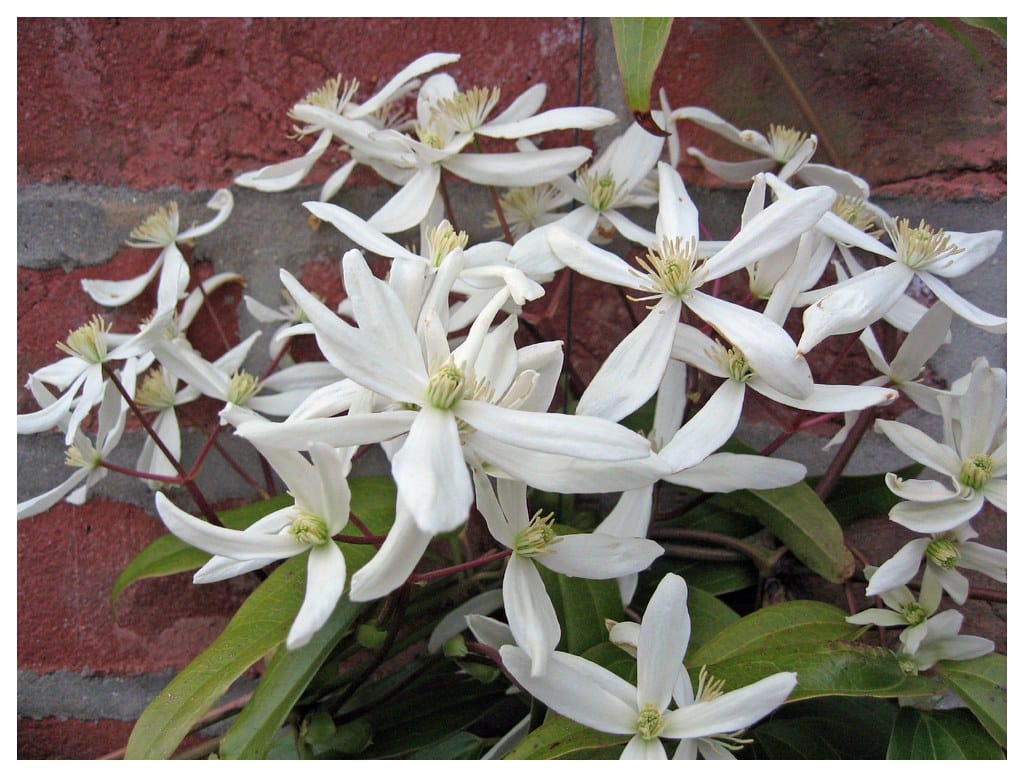
This spring-blooming evergreen vine has dark green foliage that covers trellises and fences year-round.
It blooms in April and May with fragrant little white flowers. This form of clematis is also a quick climber, but unlike many other clematis varieties, it cannot be grown in containers.
The plant has a spread of up to 30 feet, making it a great choice for a fence cover or plant to cover up an unsightly object in the yard.
It is a good vine for beginner gardeners since it is resistant to pests and drought. This is one of the best different types of climbing plants.




